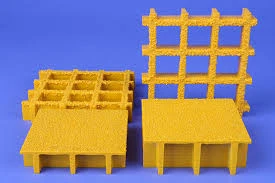loading...
- No. 9, Xingyuan South Street, Dongwaihuan Road, Zaoqiang County, Hengshui, Hebei, China
- admin@zjcomposites.com
- +86 15097380338
- Welcome to visit our website!
frp bar
Understanding FRP Bars Revolutionizing Reinforcement in Construction
Fiber Reinforced Polymer (FRP) bars are rapidly gaining popularity in the construction and civil engineering sectors due to their unique properties that offer numerous advantages over traditional steel reinforcement. These composite materials, made from a polymer matrix reinforced with fibers, typically glass, carbon, or aramid, are not only lightweight but also provide exceptional strength, corrosion resistance, and durability. This article explores the characteristics, benefits, and applications of FRP bars, highlighting why they are becoming a preferred choice for various construction projects.
Characteristics of FRP Bars
FRP bars are manufactured through a process known as pultrusion, which involves pulling fibers through a resin bath and then curing them. The result is a continuous profile that can be formed into various shapes and sizes, including round and square bars. One of the standout characteristics of FRP bars is their high strength-to-weight ratio. They are significantly lighter than traditional steel reinforcement, making handling and transportation easier, and they do not require the same level of labor-intensive preparation during installation.
Another key feature is their corrosion resistance. Unlike steel, which can corrode over time when exposed to moisture and various environmental conditions, FRP bars are impervious to such elements. This characteristic makes them particularly suitable for use in environments that experience high humidity or exposure to chemicals, such as in bridge decks, marine structures, or wastewater treatment facilities.
Benefits of Using FRP Bars
The benefits of FRP bars in construction extend beyond their material properties. First and foremost, the longevity and durability of FRP bars significantly reduce maintenance costs over time. Structures reinforced with FRP bars can sustain their integrity for decades without the need for frequent repair or replacement, thus providing a more cost-effective solution in the long run.
frp bar

Additionally, the non-magnetic nature of FRP bars makes them an ideal choice for specific applications in sensitive environments, such as in MRI facilities or any location where electromagnetic interference is a concern. Furthermore, they are electrically insulating, which can be a critical factor in preventing electrical hazards in certain construction projects.
FRP bars also contribute to sustainability in construction. Their lightweight nature leads to reduced energy consumption during transport and installation. Moreover, the durability of FRP materials means that they can contribute to more sustainable building practices by extending the lifespan of the structures in which they are used.
Applications of FRP Bars
The versatility of FRP bars opens up a wide range of applications across various sectors of construction. In civil engineering, they are being utilized in the reinforcement of concrete structures, such as bridges, retaining walls, and buildings, particularly where corrosion may be a significant concern. The use of FRP bars in these applications can enhance the overall lifespan and performance of the structures, providing greater safety and reliability.
In the field of precast concrete, FRP bars are increasingly being integrated into products like sewer pipes, slabs, and other components that require reinforcement. Their lightweight nature makes them easy to handle without compromising structural integrity. Additionally, they are being explored for use in retrofitting existing structures, where they can be bonded to the surface of concrete elements to provide additional strength without adding excessive weight.
Conclusion
In summary, FRP bars represent a significant advancement in the field of construction and engineering. With their unique properties, economic advantages, and versatility, they are poised to transform traditional reinforcement techniques. As the industry continues to seek more durable, sustainable, and cost-effective solutions, the adoption of FRP bars will likely increase, paving the way for innovative construction practices that prioritize longevity and resilience. Their role in the future of building infrastructure cannot be overstated, as they offer solutions to many challenges faced in the modern construction landscape.
-
The Rise of FRP Profiles: Strong, Lightweight, and Built to LastNewsJul.14,2025
-
SMC Panel Tanks: A Modern Water Storage Solution for All EnvironmentsNewsJul.14,2025
-
GRP Grating: A Modern Solution for Safe and Durable Access SystemsNewsJul.14,2025
-
Galvanized Steel Water Tanks: Durable, Reliable, and Ready for UseNewsJul.14,2025
-
FRP Mini Mesh Grating: The Safer, Smarter Flooring SolutionNewsJul.14,2025
-
Exploring FRP Vessels: Durable Solutions for Modern Fluid HandlingNewsJul.14,2025
-
GRP Structures: The Future of Lightweight, High-Performance EngineeringNewsJun.20,2025
